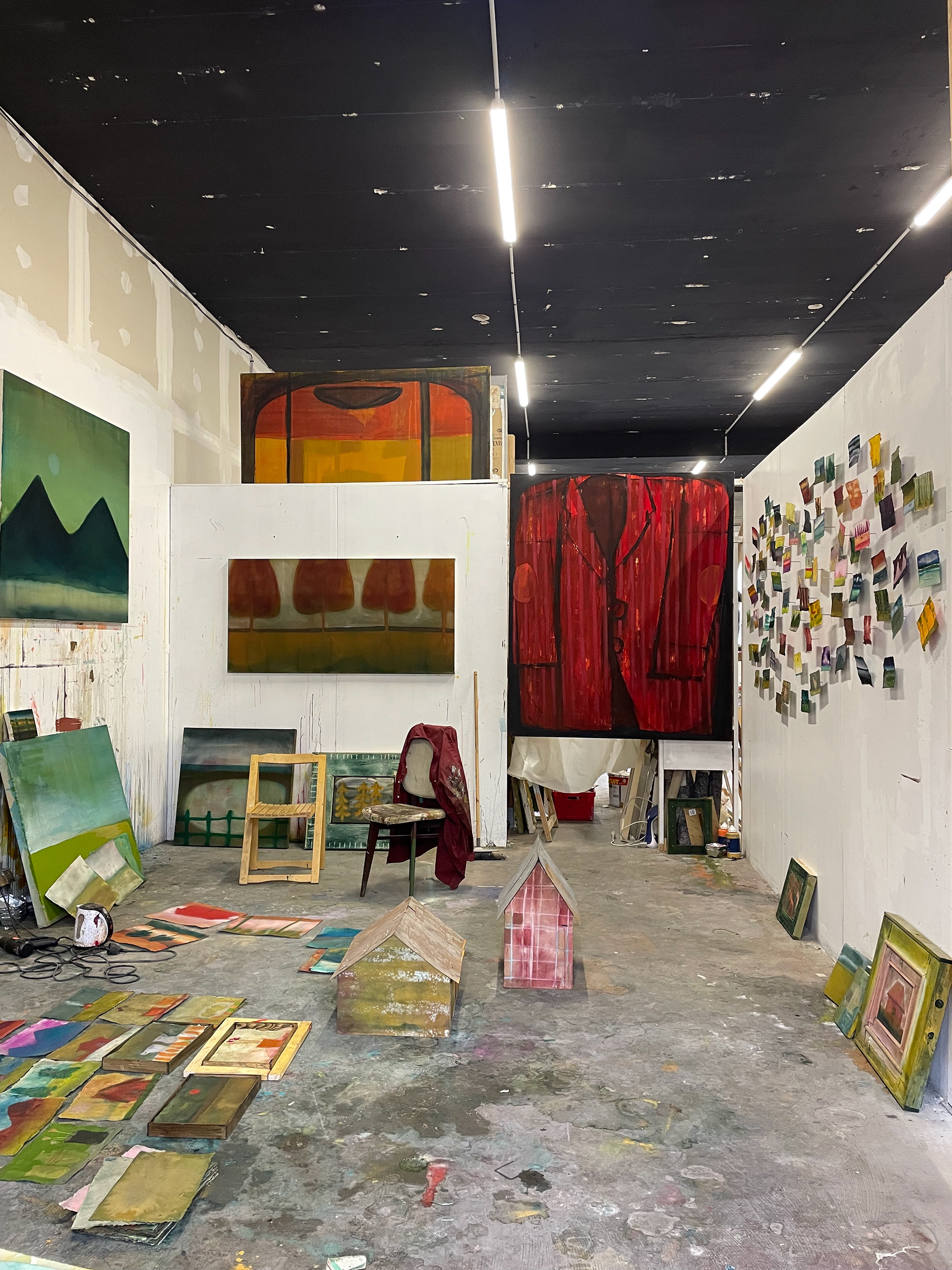For this new exclusive interview, I had the pleasure of talking to French painter Maxime Testu. This interview was conducted to mark the exhibition of the artist’s work in a forthcoming group show at the gallery in October, and the first collaboration between the gallery and the artist.
Born in Normandy, Maxime Testu is a French artist based between Paris and Normandy. In my opinion, the distinctive feature of Maxime Testu’s work is its great mobility, its perpetual movement and the intersection of genres and artistic currents that the artist likes to mix and match in a work that is each time unique. His creative process is particularly physical, involving the whole body, in the image of the American action painting of the 50s, where paint placed on the floor is moved around and drenched in various coloured baths.
These canvases, with their infinite shades of light and colour, or these “colour filed” canvases, are transformed in a final gesture into immense still lifes or small landscapes through the use of a vocabulary of restricted, archetypal forms. Shaking up the hierarchy of genres, but also of artistic categories, notably through the creation and integration of unique frames, the artist blurs the codes between the so-called plastic and decorative arts.
In this interview, the artist talks about his artistic career, and the decisive moments and encounters in his artistic development, notably with tutelary intellectual figures such as Baudelaire and Guston. The artist describes his plastic research and the way in which he approaches his artistic work, which shows that his work continues and is prolonged, where his painting mixes or feeds off different techniques.
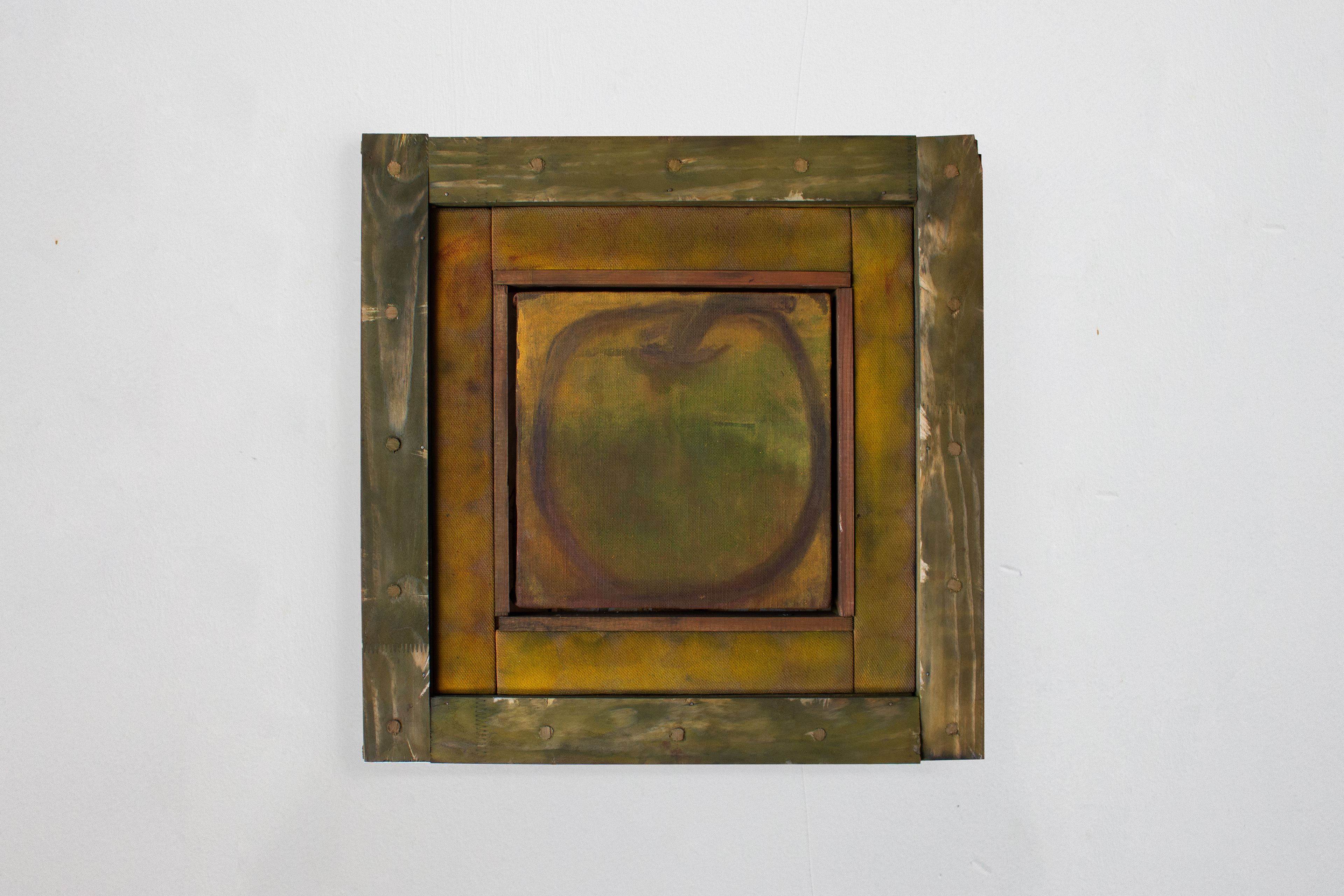
Maxime Testu, La pomme, 2025, acrylique, pigments, fusain, 40x40cm
“In terms of process, it’s a work that is very much about erasure (which comes from my monotype practice) where the paint is applied in a very liquid way, right in the pot and by physically turning the stretcher.”
Maxime Testu
Elsa Meunier : Can you introduce yourself? (Short bio, career path, what determined your choice to devote yourself to your artistic practice).
Maxime Testu : I was born in Normandy and grew up in the countryside. I developed a keen interest in drawing at an early age and practised as much as I could whenever I had the chance. At secondary school, I discovered art in books, on my own, and quickly became more fascinated by the artists than by the works themselves. Art was a series of stories with heroes I felt close to. I was a very idealistic and romantic person in a sense.
When it came time to make choices, I was so afraid of having regrets that I decided I had to follow through with my idea. I attended several fine art schools, focusing exclusively on sculpture; I no longer drew. At the Beaux-Arts in Lyon, I really discovered contemporary art thanks to the school's library. I decided to divide my time between the studio in the morning and reading in the afternoon. At that time, I acquired a good part of my knowledge about sculpture.
I practised sculpture until I had had enough. I had a kind of artistic crisis where I felt completely disconnected from my practice. What I was doing no longer suited me. So I decided to stop sculpting and return to my first love, drawing, but through the prism of engraving. Little by little, engraving techniques (etching, monotype, etc.) naturally led me to painting, which I still try to push to its limits by combining it with various techniques.
E.M : I discovered your work through your large-format pieces. Against coloured backgrounds, a black outline delineates the shape of an object. Clogs, jugs, carts, basins... these everyday, familiar objects take on immense proportions on the canvas, which seems insufficiently large to contain them, accentuating their immensity. How did this work come about? What interests you about the relationship between these coloured backgrounds and the black lines?
M.T : At one point in my career, I realised that certain objects were rarely depicted in contemporary art. Objects that I knew quite well, rustic, everyday objects that were still in use fifty years ago but which quickly fell into disuse, transformed into decorative objects.
My first paintings depicted agricultural objects, with a horizon and a backdrop. Then, little by little, I tried to eliminate everything that didn't really interest me: I wasn't interested in composition, so I decided to place the objects in the middle of the painting. I wasn't interested in the play of light and shadow either; I just wanted to bring out the colour as strongly as possible. And I wasn't interested in perspective either, so I decided to darken the background. I liked the fact that it could be compared to a certain type of photography, a very factual photography, like that of New Objectivity, trying to neutralise the frame as much as possible to give the object, and here the colour, its rightful place.
In terms of process, it is a work that is done largely by erasure (which comes to me more from my practice of monotype) where the paint is applied in a very liquid manner, straight from the pot and by physically turning the frame.
Throughout the process, the painting is pure abstraction. It is then through the black strapping, its final stage, that it shifts towards figuration and, more specifically, still life. I like to think of these paintings as a form of reconciliation between regionalist painting and abstract painting (Color Field).
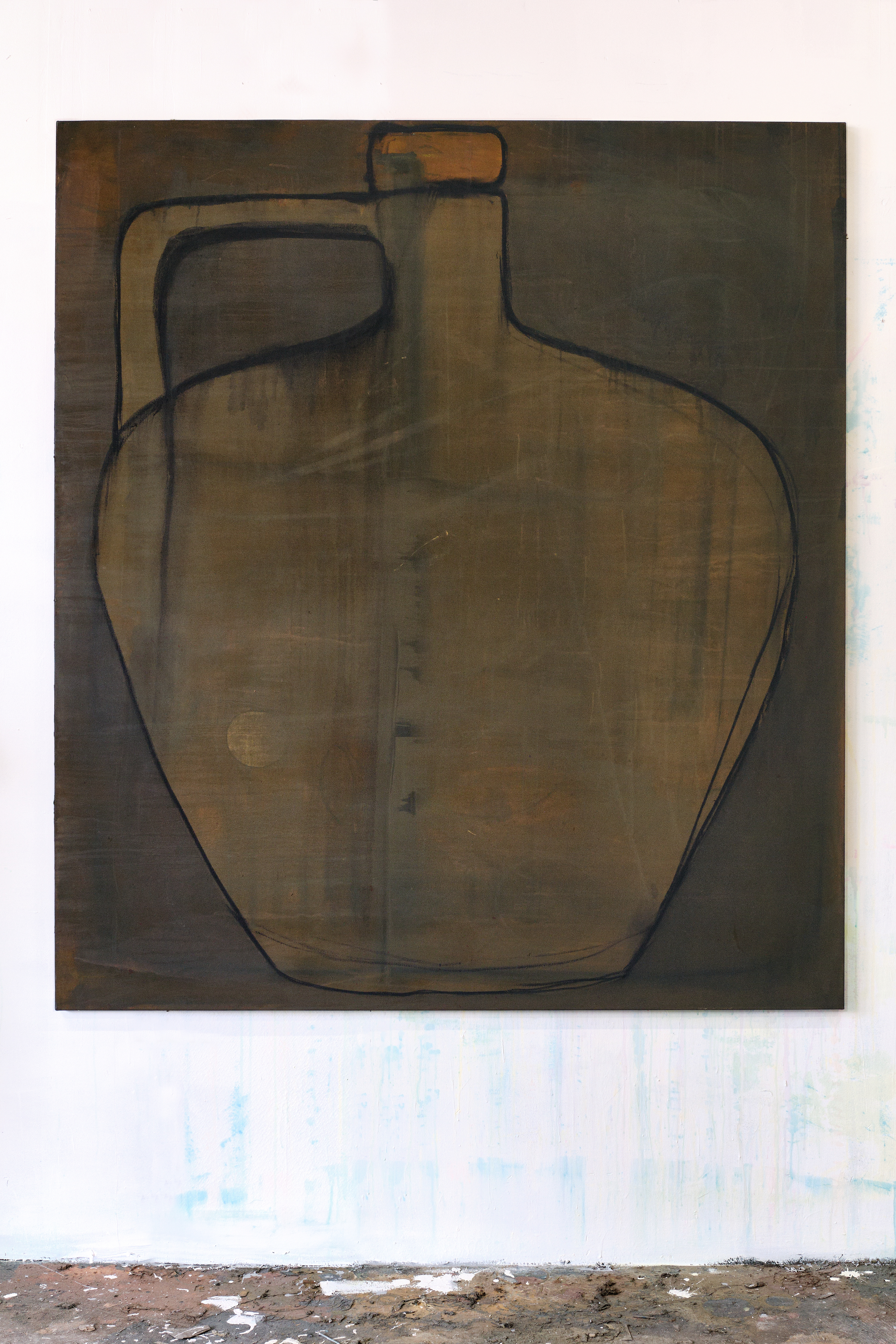
Maxime Testu, La Jarre, 2024, acrylique, pigments, fusain, 160x180 cm. Ph. Luc Bertrand
E.M : At the same time, you gradually continued this work with colour on small and medium-sized formats. But here, colour is used directly to define the patterns, and the black outline is almost completely absent. Furthermore, on these smaller surfaces, the pattern is also smaller and more in proportion to the background. Can you comment on this work and this research?
M.T : These small formats came after the large ones. As I use a technique involving a lot of water, where I erase a lot of my canvases, I lose a lot of material. At first, I mounted several small canvases that I placed upside down on the floor. They collected all the colours from my large canvases that dripped onto the floor (in my studio, I really work in a large puddle). This gave me my first backgrounds, which I decided to transform into landscapes. I really like the idea of tackling a specific genre: still lifes on large formats, landscapes on small ones.
E.M : Each painting is created using a multitude of colours, shades and blends. The surface remains very smooth and appears watery. What is your usual creative process for producing them?
M.T : My canvases are always worked with waterlogged, which gives them this diffuse quality. I like this atmospheric aspect, almost unpainted, and I try to eliminate brushstrokes as much as possible. I work mainly by pouring paint directly onto my canvas and turning it in all directions. These are canvases with little relief, physically speaking, everything is in the mesh, a bit like dyes.
E.M : Certain motifs recur frequently from painting to painting: the donkey, the horse, the house, the tree, the rowboat, the fence... they seem to constitute your vocabulary of most recurring forms. By using these same motifs, is this a way for you to free yourself from the weight of the subject and fully pursue your constantly evolving pictorial research?
M.T : Let's say that these are archetypes that allow me to place my paintings in the landscape genre; they provide a resting point for the eye. They function as signposts that I like to use because they free up the pictorial field. For the rest, I delve into the pictorial material.
There are also many uncertainties; I create spaces for accidents to happen. But one thing I consciously pay attention to is avoiding too many specifics in terms of space and time. These are houses that could be any house, etc. When the elements remain open, I believe the viewer has enough space for themselves.
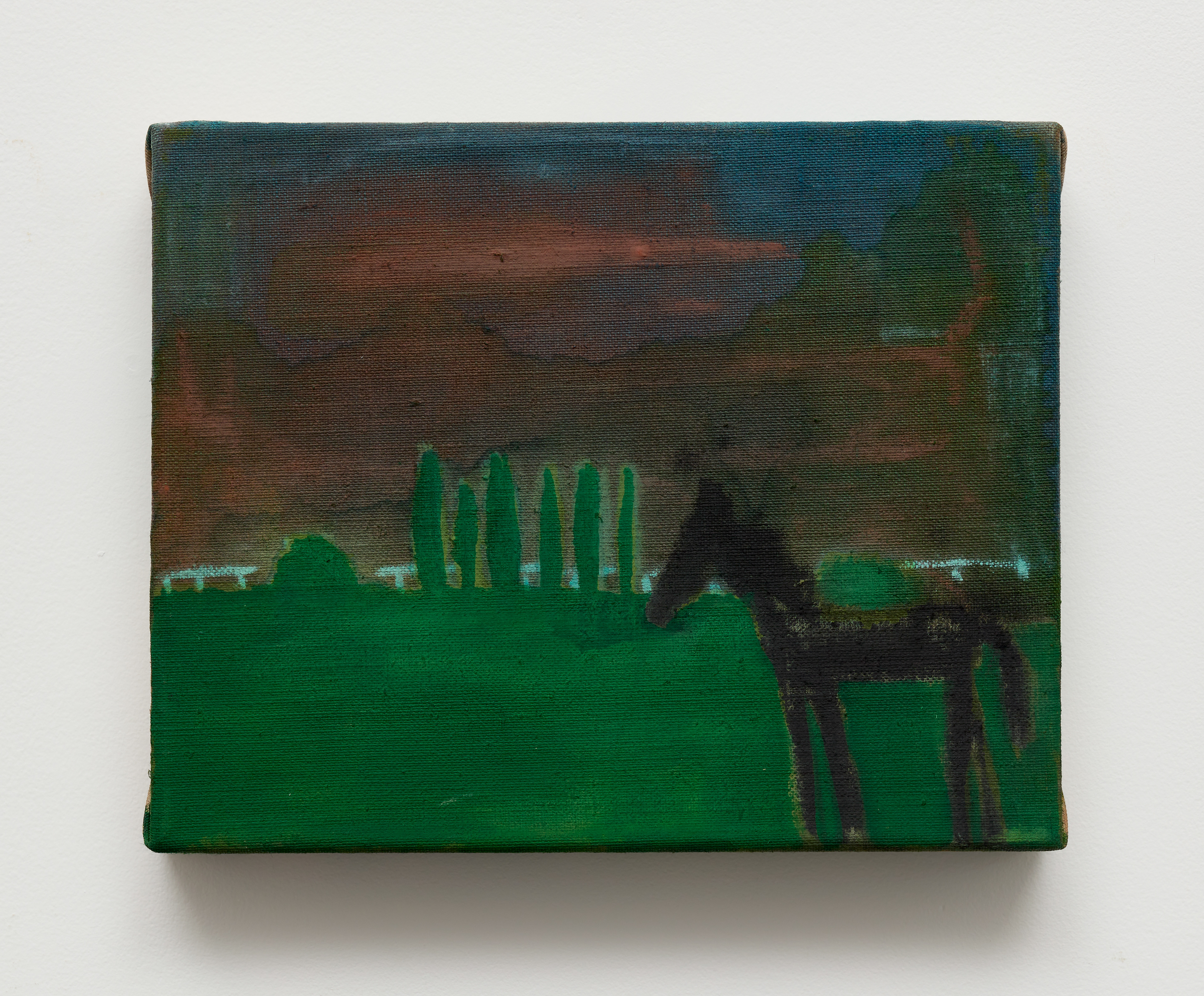
Maxime Testu, Le cheval, 2024, Ink on canvas, charcoal, pigments with arabic gum, 24 x 30 cm
E.M : You have gradually incorporated frames that you make yourself and whose function you seem to question. Here, the frame is not conceived as separate but rather as an extension of the pictorial work: it is painted, sculpted, sometimes with painted fabric glued to it... Each frame is unique, and the way you design it will respond to the dialogue that will take place with the existing pictorial work that will receive it. The wooden frame and the work on wood together form the final, unique work. Can you tell us about this work?
M.T : At first, I simply made a shadow box that I painted, then, quite quickly, I enlarged the frame. Through trial and error, I realised that the best thing to do was to use fabric (the same as that used for my canvases) so that I could treat the ‘corridors’ of the frame in the same way as my paintings. They became extensions, other spaces for the circulation of colour.
What I also like is to deal with the decorative aspect and embrace a part of creation that is often thought of afterwards (in our time). In this way, I create confusion between the things that are shown: what was created first? What was the primary element? Everything becomes blurred and calls into question a form of hierarchy in painting.
E.M : What are your main artistic references and influences that feed into your practice?
E.M : What are your main artistic references and influences that feed into your practice?
M.T : I will limit myself to a few figures, those who are still important today.
The first artistic figure I admired was Baudelaire, both for his writings and his personality. Baudelaire was a guiding light who influenced many other things through his legacy. For example, the fictional character created by Joris-Karl Huysmans, Jean Des Esseintes, the hero in his novel ‘A rebours’. His relationship with the dandy, with artifice and its construction quickly fascinated me. I often think about this because I strongly believe in the idea of constructing a world or receiving a world that is the result of a myriad of images and sensations, and not just the result of a purely personal construction.
There is one artist I always come back to, especially in times of anxiety, and that is Philip Guston. I discovered him at art school in a red book, translated into French, and although I was already drawn to his paintings, it was his writings, his way of talking about his work, that moved me. Later, long after my studies, I read everything I could find. I feel that I understand what he is saying intimately, I feel very close to his way of thinking: a balance between something extremely pragmatic and very cerebral. I think it is painting full of doubt, painting that thinks and questions itself as it is being created, and that is something that is not foreign to me.
There is one artist I always come back to, especially in times of anxiety, and that is Philip Guston. I discovered him at art school in a red book, translated into French, and although I was already drawn to his paintings, it was his writings, his way of talking about his work, that moved me. Later, long after my studies, I read everything I could find. I feel that I understand what he is saying intimately, I feel very close to his way of thinking: a balance between something extremely pragmatic and very cerebral. I think it is painting full of doubt, painting that thinks and questions itself as it is being created, and that is something that is not foreign to me.
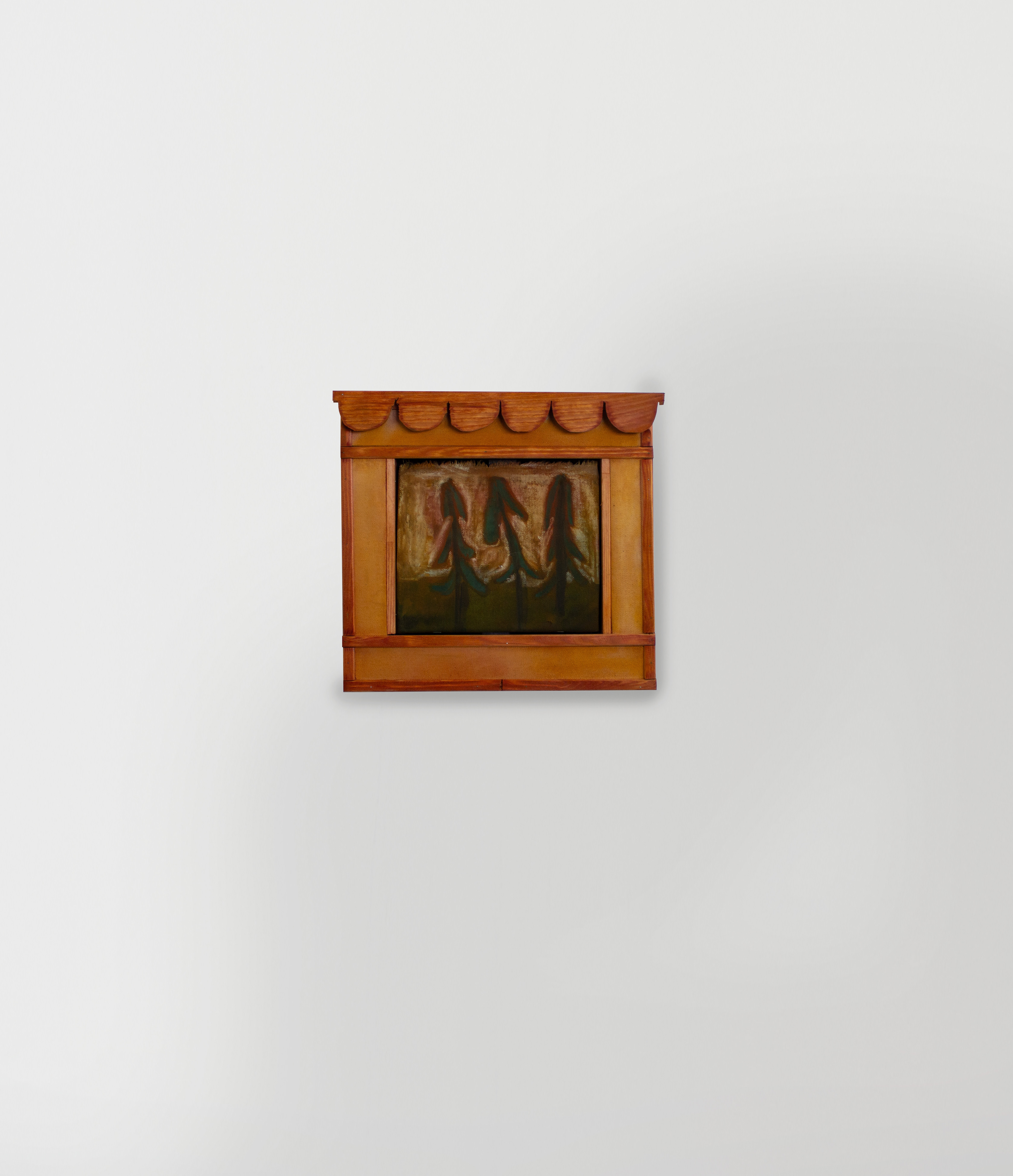
Maxime Testu, Les trois arbres, 2025, pigments, fusains, encres, bois, 30x30 cm
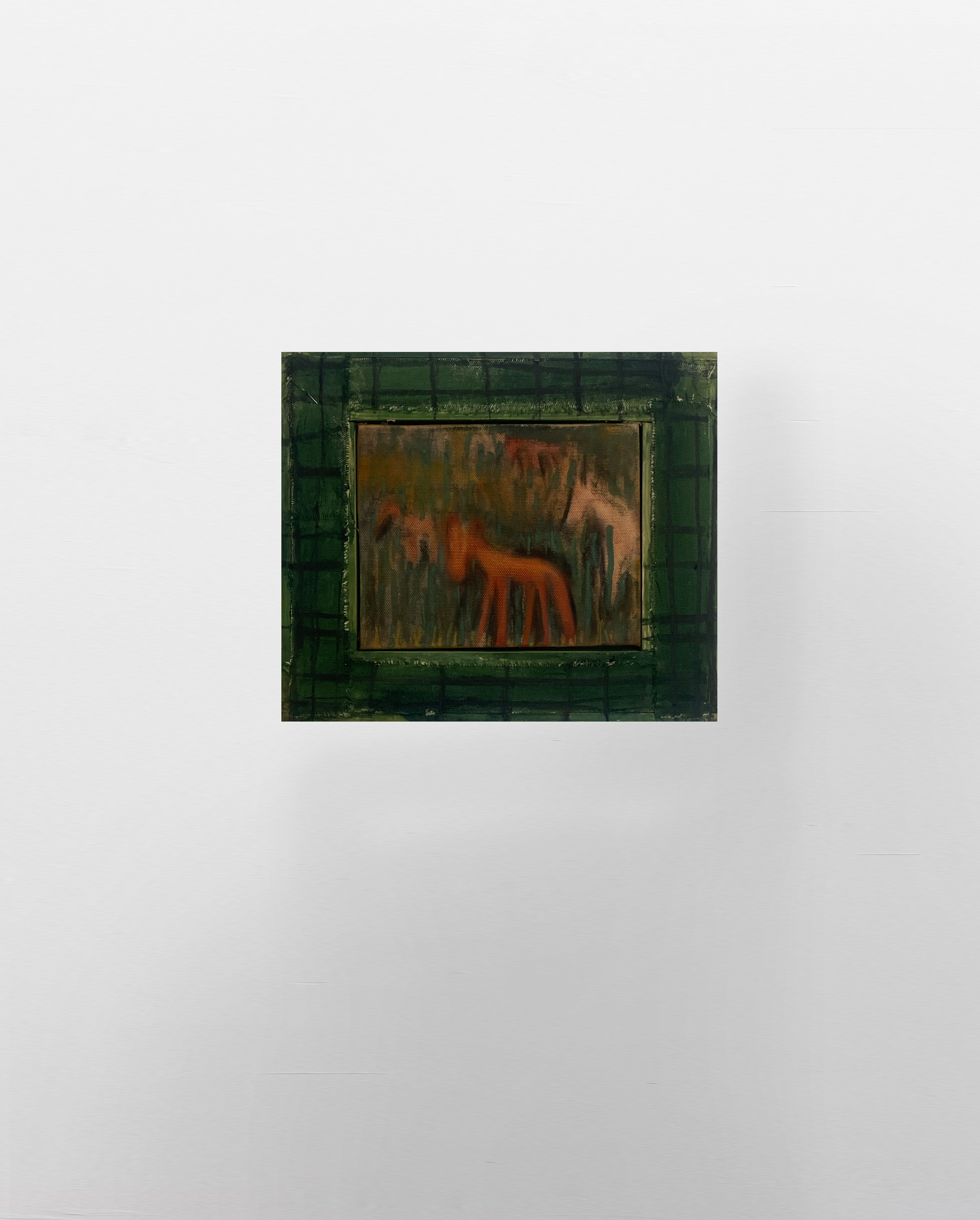
Maxime Testu, Le troupeau, 2025, acrylique, pigments, fusain, 30x20 cm
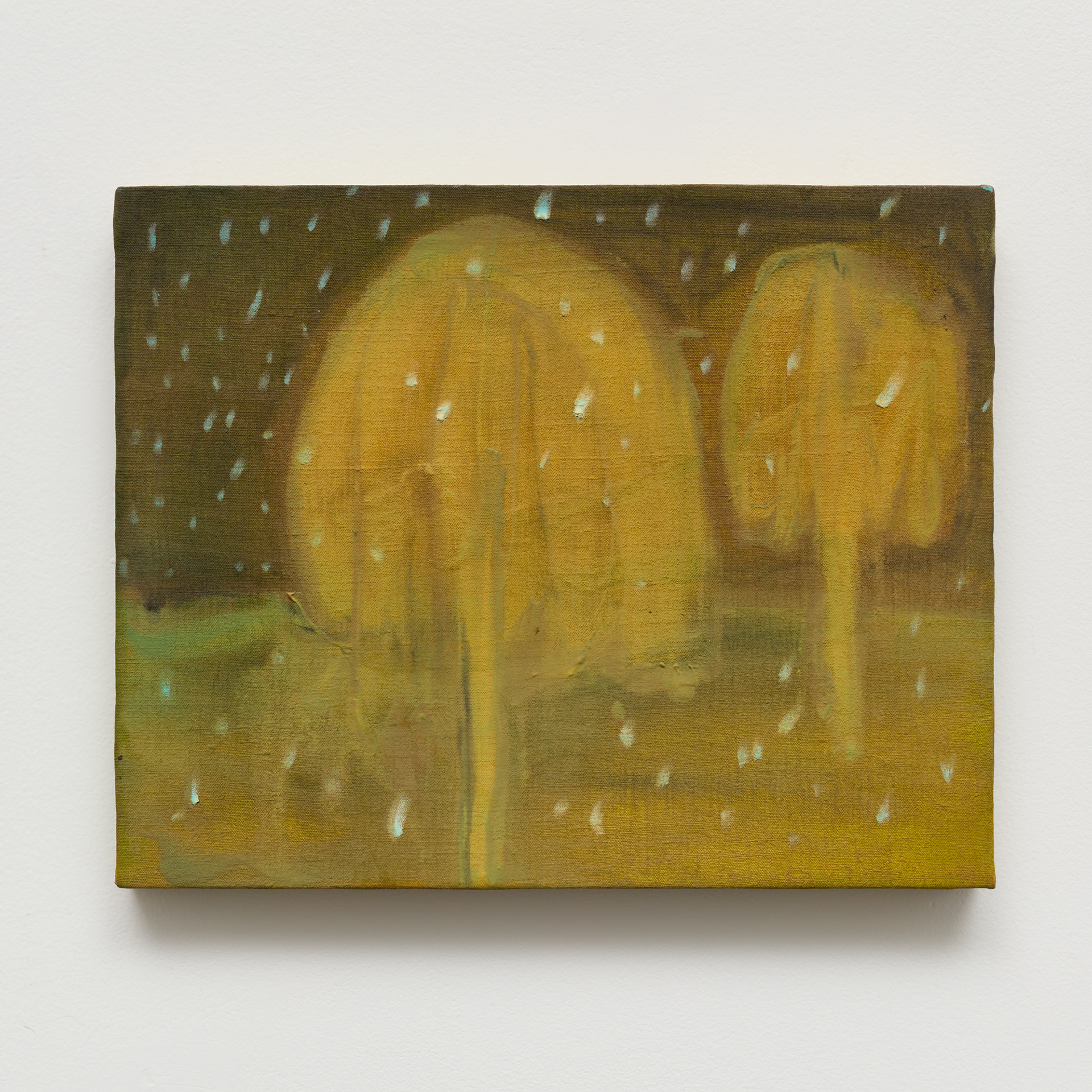
Maxime Testu Les saules pleureurs, 2024, pigments, charcoal, ink on wood, 24 x 30 cm
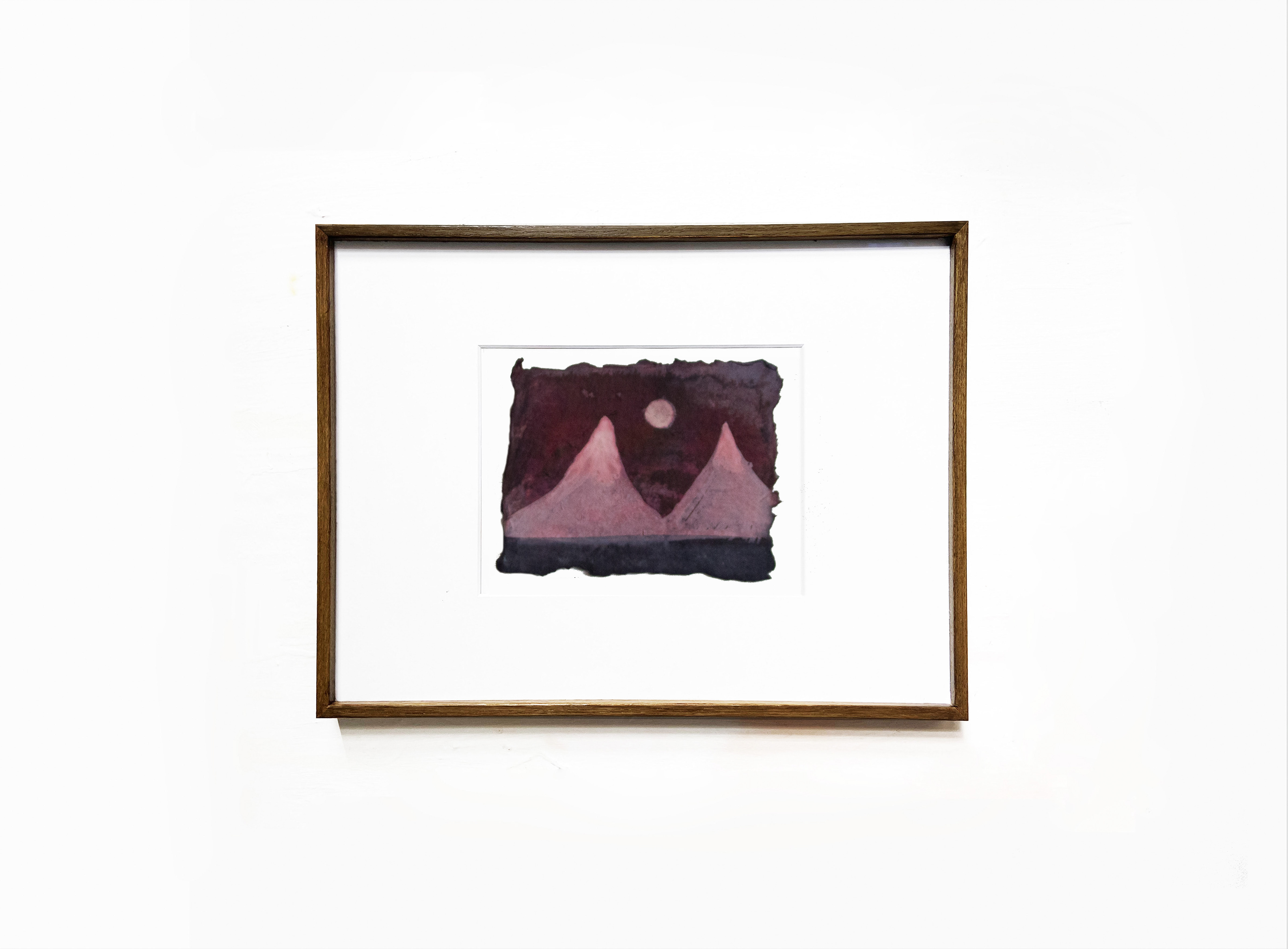
Maxime Testu, Montagnes roses, 2025, watercolour on paper, 10x15 cm
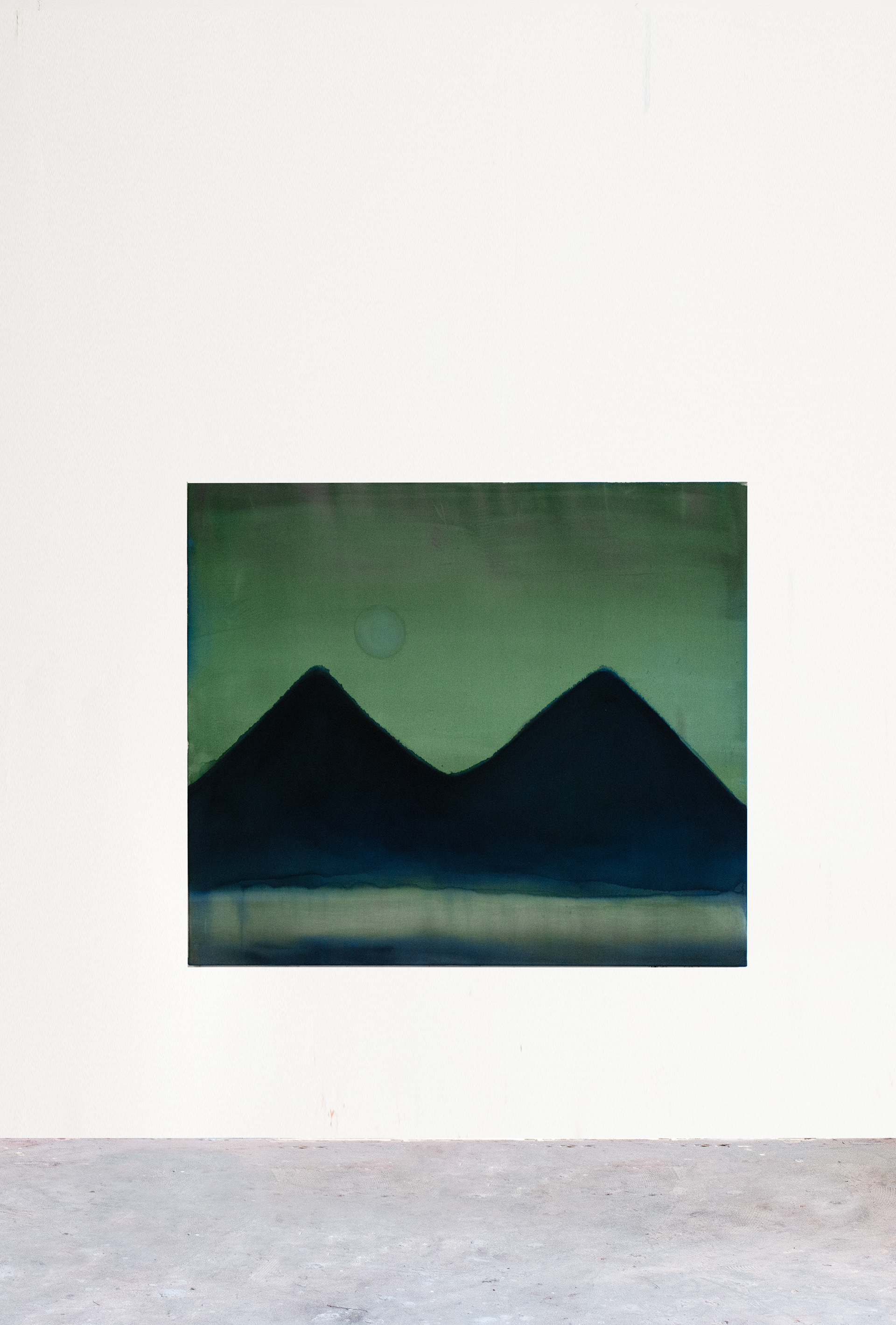
Maxime Testu, Les deux montagnes, 2025, pigments, charcoal, ink on canvas on wood, 120 x 140 cm
Maxime Testu's work will soon be on view in his first solo exhibition
with the gallery.
More info coming soon.
Galerie Elsa Meunier
15, rue Guénégaud 75006 PARIS
